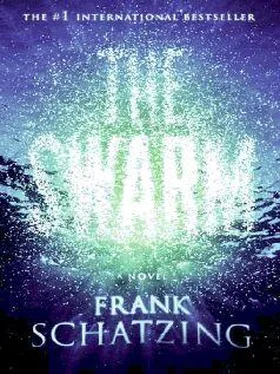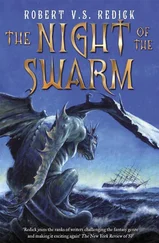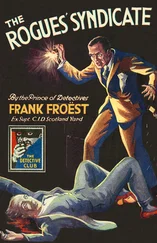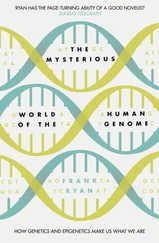It was a revolutionary idea. It meant that knowledge could be inherited. They'd discussed it with Johanson, Oliviera and Rubin, but the outcome had left them more bemused than ever. 'The good news was that the theory had been accepted with enthusiasm. The bad news was that there was an almighty catch.
CONTROL ROOM
'What you have to realise,' explained Rubin, 'is that when DNA mutates, its genetic information changes – and that spells trouble for any living creature.'
While the others were still analysing the samples, Rubin had snuck out of the lab, supposedly because his migraine was returning. In reality, he'd disappeared into the hidden control room for a meeting with Li, Peak and Vanderbilt. They were working through the transcripts from the audio surveillance. By now they all knew about the computer program and about Weaver and Anawak's theory – but only Rubin understood the implications.
'Organisms rely on their DNA staying intact,' said Rubin. 'Otherwise they fall sick or produce defective offspring. Exposure to radiation, for instance, causes irreparable damage to DNA, resulting in cancer or birth defects.'
'But how does that fit with evolution?' asked Vanderbilt. 'If humans are descended from apes, our DNA must have changed.'
'Sure, but evolution takes place over a long time. And it selects those organisms whose natural mutation rate makes them best suited to the prevailing conditions. People don't often talk about evolutionary failures, yet nature gets rid of unsuccessful adaptations all the time. That said, there is another option, and that's repair. Take tanning, for instance. Sunlight leads to changes in the cells in the upper layers of our skin, resulting in mutations in the DNA. Our skin starts to tan, and if we're not careful we go red and burn. When that happens, our body sheds the cells that have been destroyed, but those remaining can be repaired. It's repairs like these that allow us to survive. Without them, we'd not only suffer continual mutations in our DNA, but our injuries wouldn't heal and we wouldn't recover from disease.'
'Fine,' said Li. 'But what about single-cell organisms?'
'The same thing applies,' said Rubin. 'If their DNA mutates, it has to be repaired. And remember, organisms like that reproduce by cell division. For a species to remain stable, its DNA has to undergo repair. It doesn't matter what kind of cells we're talking about, nature always endeavours to keep the rate of mutation within manageable limits. And that's the catch for Anawak's theory. The genome is repaired globally, along its entire length. You can picture the repair enzymes as policemen, patrolling the entire DNA strand on the look-out for errors. As soon as they find a defective area, they begin the repair. To ensure that the information corresponding to the DNA's original sequence doesn't get lost, the repair enzymes act as the guardians of the genome's data. They police the sequence and can tell immediately which genetic configurations match the original and which are defective. It's like trying and failing to teach a child to talk. As soon as it learns a new word, the repair enzymes come along and reprogram it to its original state – ignorance. It's not possible for it to learn.'
'Then Anawak's theory is nonsense,' said Li. 'It would only make sense if the amoebas could retain the changes to their DNA.'
'Well, on the one hand, that's right. Any new information would be treated as defective by the repair enzymes and, hey presto, the genome's restored to its original configuration. Back to square one, so to speak.'
'I'm guessing,' grinned Vanderbilt, 'that we're about to hear the butt.'
Rubin nodded hesitantly. 'There is one,' he said.
'Which is?'
'I don't know.'
'Hang on,' said Peak. He sat up in his chair and winced. His foot was bandaged. 'I thought you just said-'
'I know! But the theory's brilliant,' cried Rubin. 'It would explain everything. Then we'd be certain that the substance in the tank is our enemy. We'd be face to face with the yrr – the creatures that have landed us in all this shit. And I'm certain that it's them! We saw some pretty weird stuff in the lab this morning. The blob of jelly examined our robot, and you should have seen the way it did it – it had nothing to do with animal instinct or curiosity. It was pure cognitive intelligence. Anawak's theory must be right. Weaver's already got it working electronically.'
'But how are we supposed to make sense of it?' Vanderbilt sighed and mopped his forehead.
'It could be to do with anomalies.' Rubin gestured vaguely. 'Even repair enzymes sometimes make mistakes. Not often, but every ten thousand repairs or so they slip up. They miss a base pair that should have been restored to its original state. It's not much, but it's enough to cause a baby to be born hemophiliac, with a cleft palate or even cancer. We see these anomalies as defects, but they're proof that the repair mechanism doesn't always work.'
Li got up and paced slowly round the room. 'So you believe that the amoebas and the yrr are one and the same. We've found our adversary.'
'With two provisos,' Rubin added. 'First, we have to solve the DNA conundrum, and second, there has to be some kind of queen-yrr. No doubt the collective is highly intelligent, but I reckon the stuff we've got down there is only the executive part of the whole.'
'A queen-yrr? How do you envisage it?'
'Well, the same and yet different. A bit like ants. The queen-ant is an ant, but a special one. She's at the heart of everything. The yrr are swarming organisms, you see – collectives of amoebas. If Anawak's right, they embody an alternative evolutionary path for intelligent life, but something must be guiding them.'
'So if we were to find this queen…' Peak began.
'No.' Rubin shook his head. 'There's no point in fooling ourselves. There could be more than one – there could be millions. And if they're smart, they won't come anywhere near us.' He paused. 'But to be queens, they'd necessarily share the same basic principles as the rest of the yrr. They'd aggregate, and they'd have genetic memory. We're in the process of isolating a chemical that the amoebas give off as a signal to start aggregating. Oliviera and Johanson are on the brink of working out its formula. And you can bet that this chemical, this pheromone, will also cause the queens to aggregate with the yrr too. Scent is the key to yrr communication.' Rubin gave a self-satisfied smile. 'And it could be the answer to all our problems.'
'Thank you, Mick.' Vanderbilt inclined his head towards him graciously. 'You're in our good books again – for the time being at least. Even if you did screw up on the well deck.'
'That wasn't my fault.' Rubin sounded offended.
'You're in the CIA, Mick. In my team. And in my team the buck always stops with you. Did we forget to mention that when we hired you?'
'No.'
Vanderbilt shoved his handkerchief clumsily into his trouser pocket.
I'm glad to hear it. Jude's about to call the President so she'll be able to tell him what a good boy you've been. Thanks for paying us a visit. Now, run along back to work.'
FLAG COMMAND CENTER
Crowe and Shankar didn't look anywhere near as self-assured as they had when they'd decoded the first signal. Team morale was low, which was only due in part to the terrible events on the well deck. It was becoming increasingly obvious that no one understood the yrr's strategy.
'Why send us a message and then attack us?' asked Peak. 'Humans wouldn't do that.'
'You've got to stop thinking in those categories,' said Shankar. 'They're not humans.'
'I'm just trying to understand.'
'Well, you never will, if you keep basing your ideas on human logic,' said Crowe. 'Maybe their first message was a warning. We know where you are . That's what their reply comes down to.'
Читать дальше












